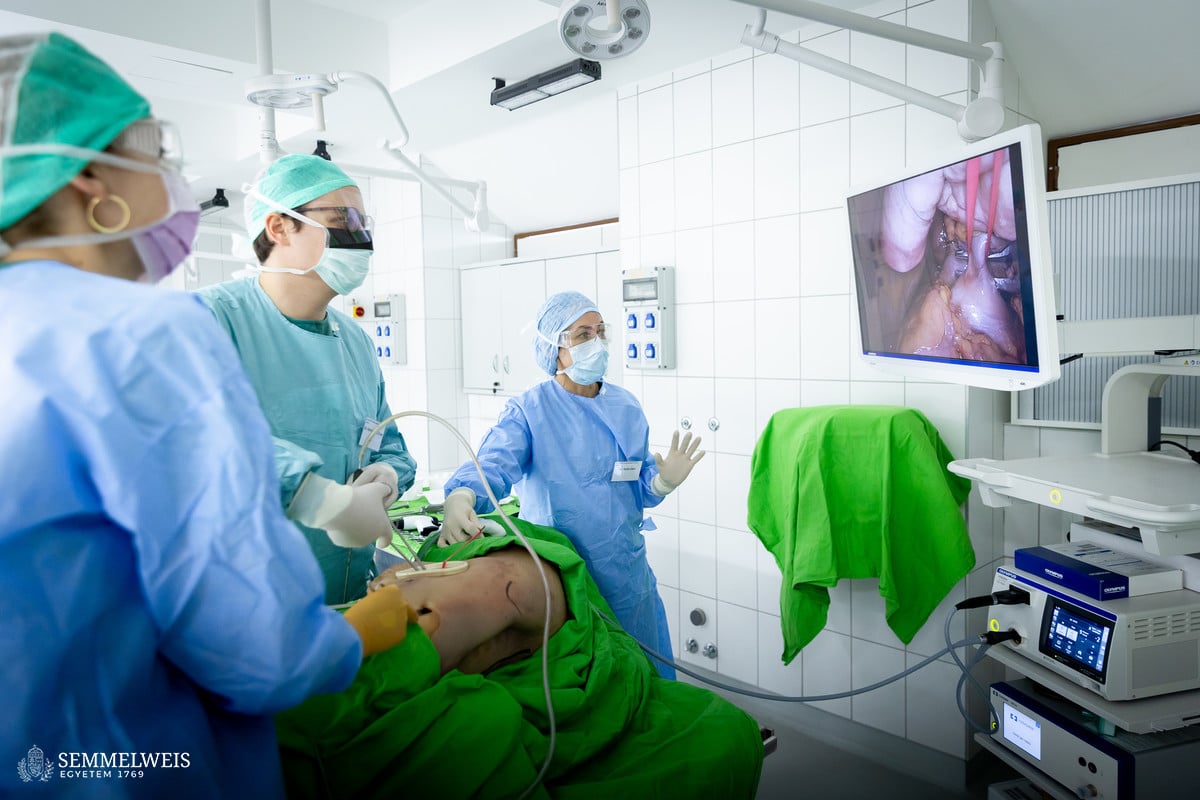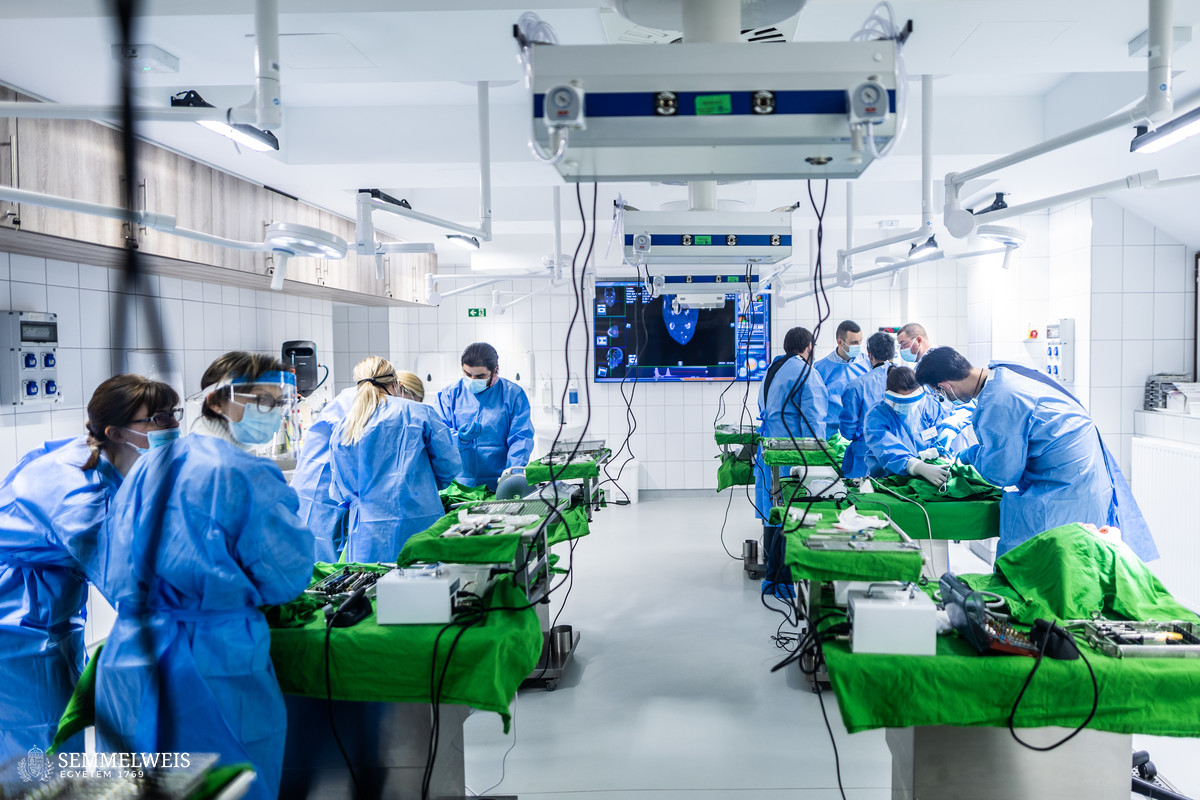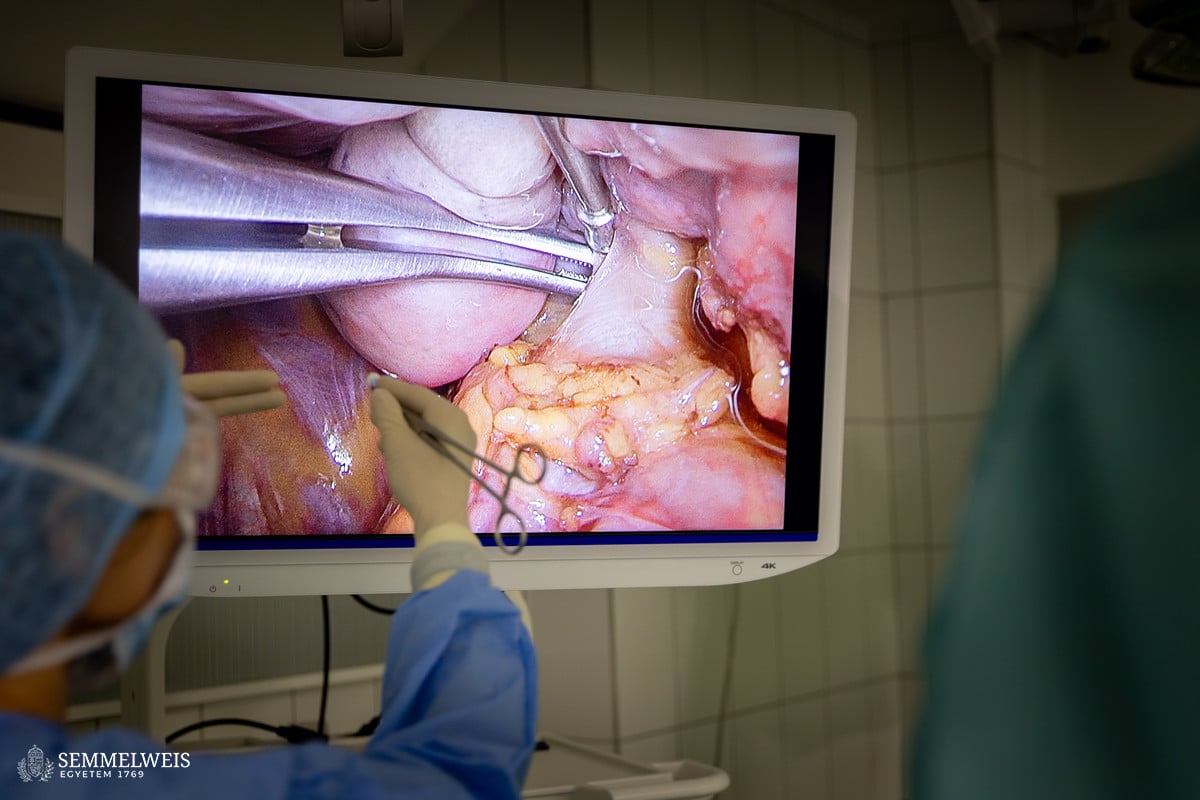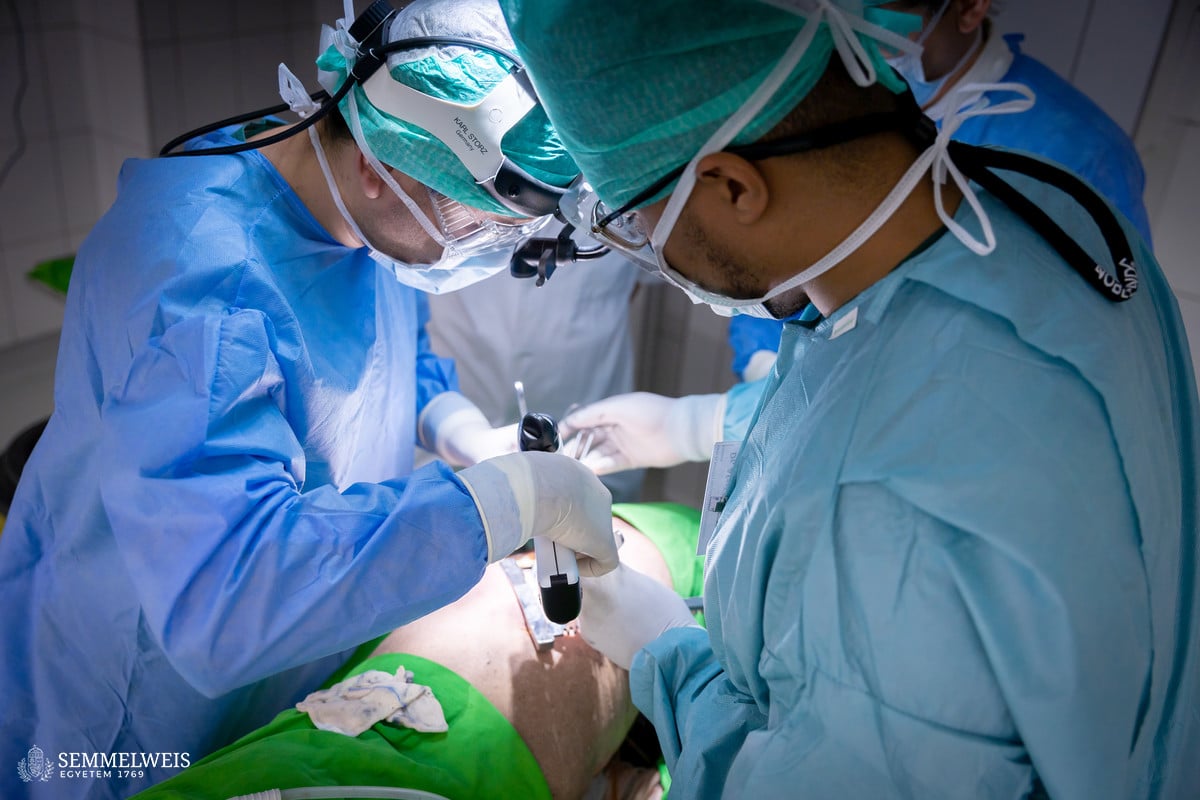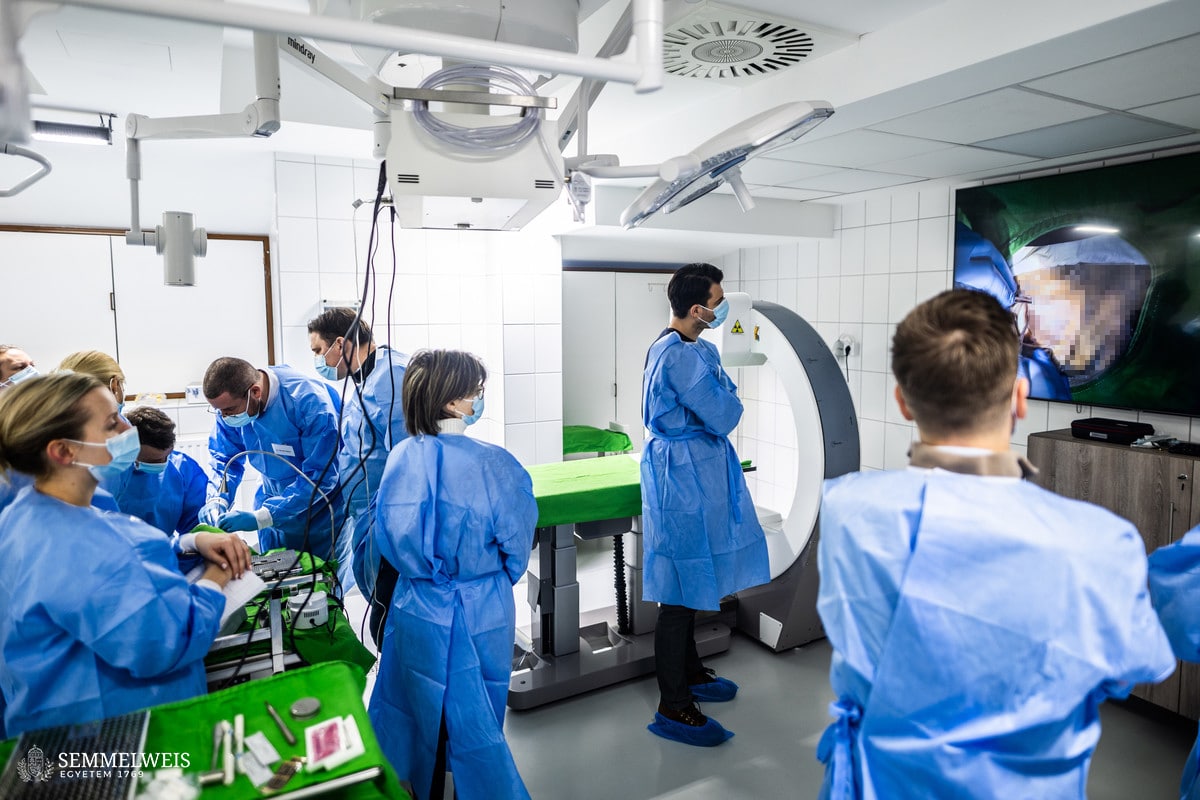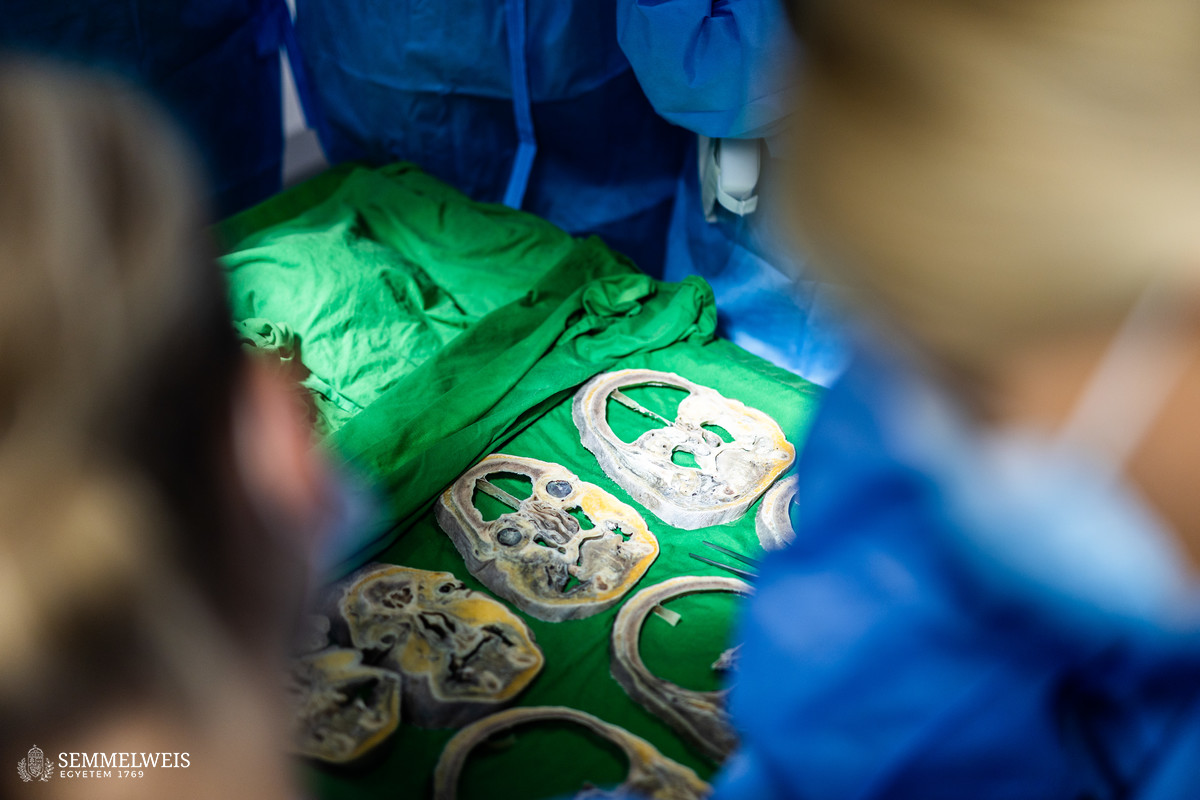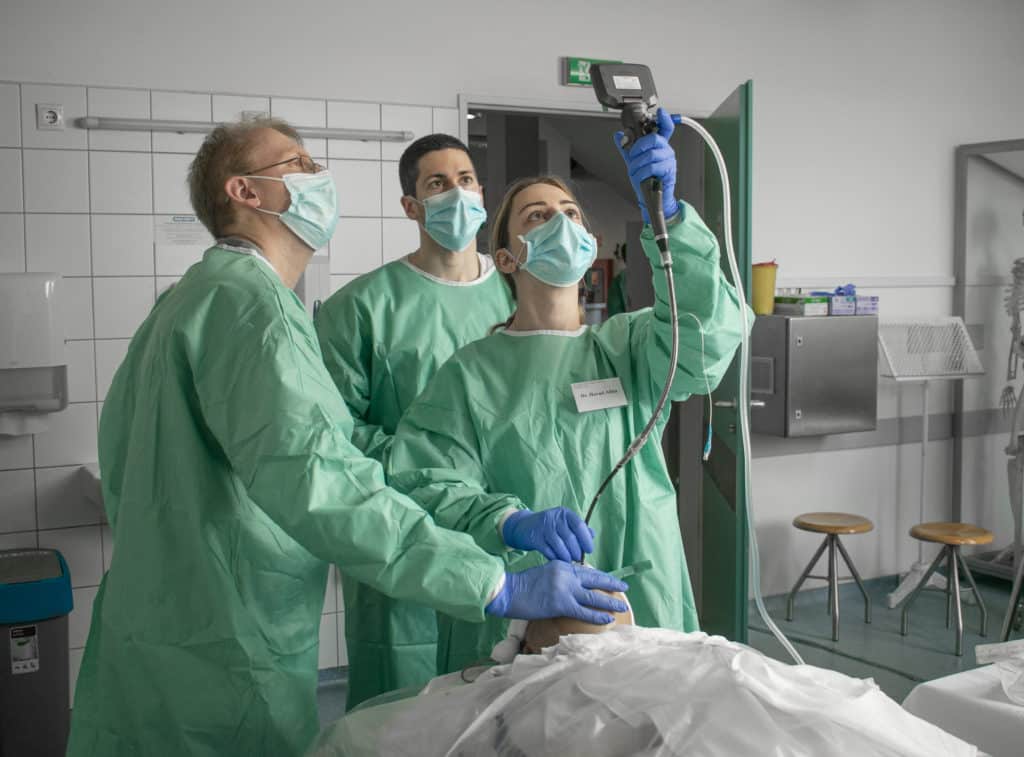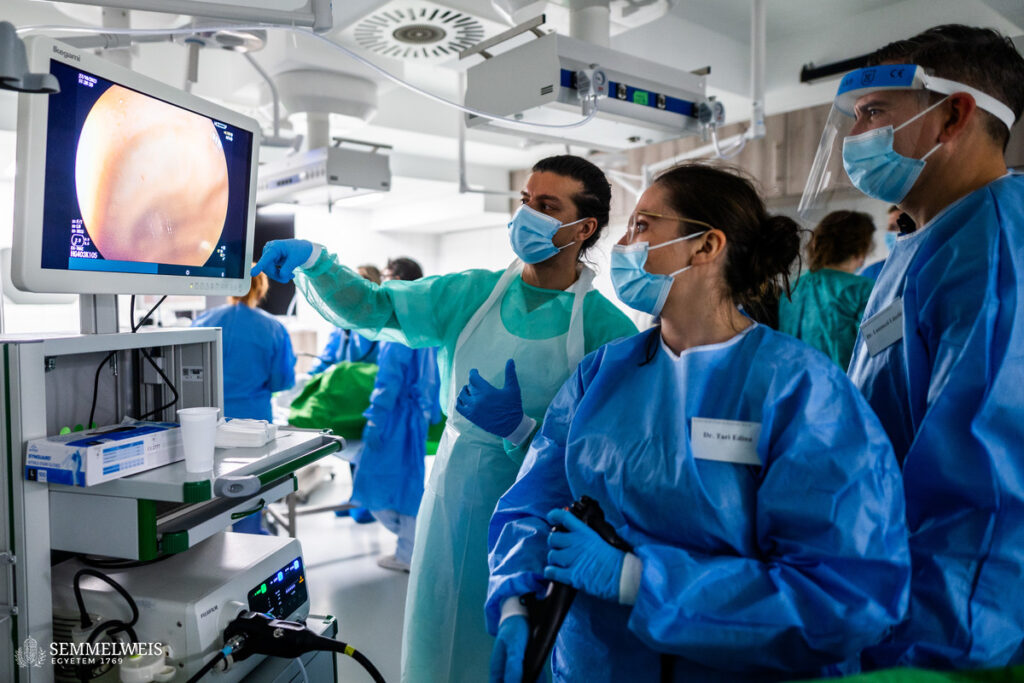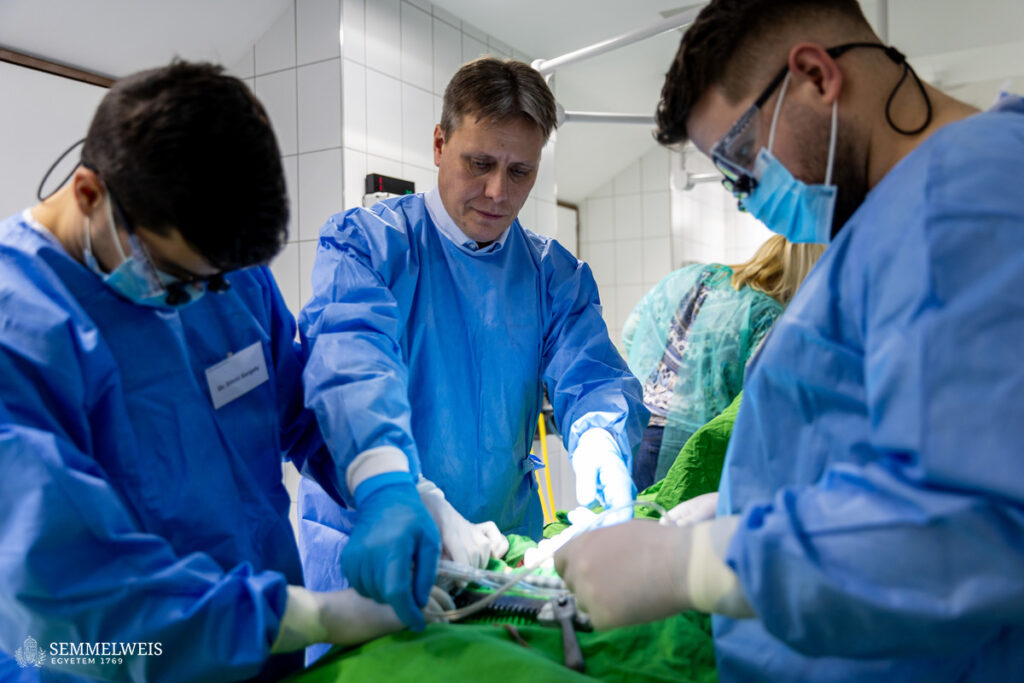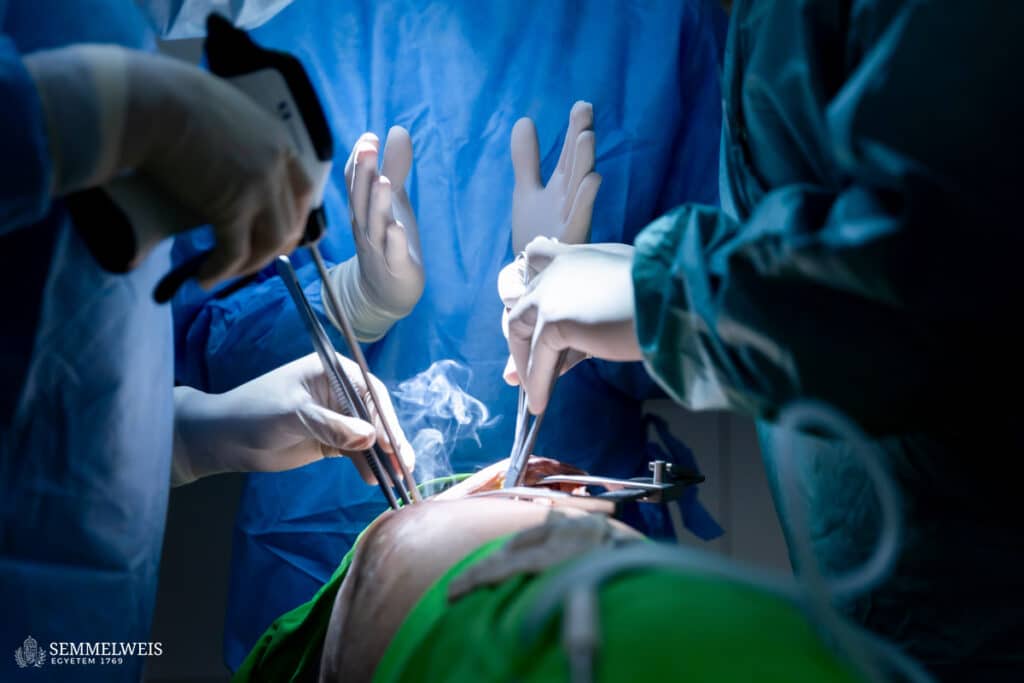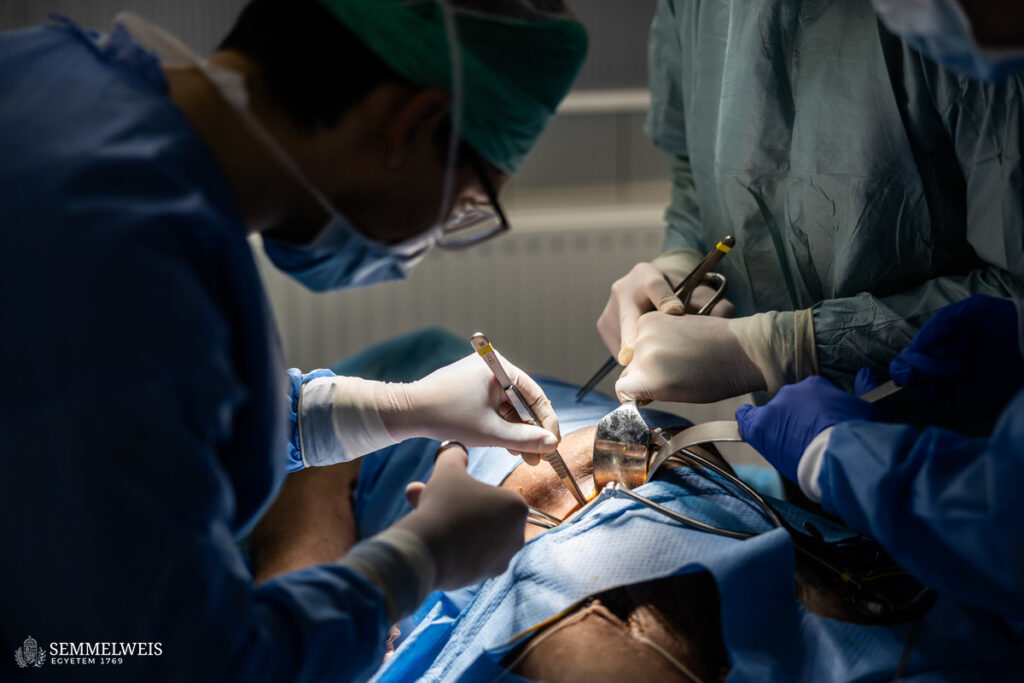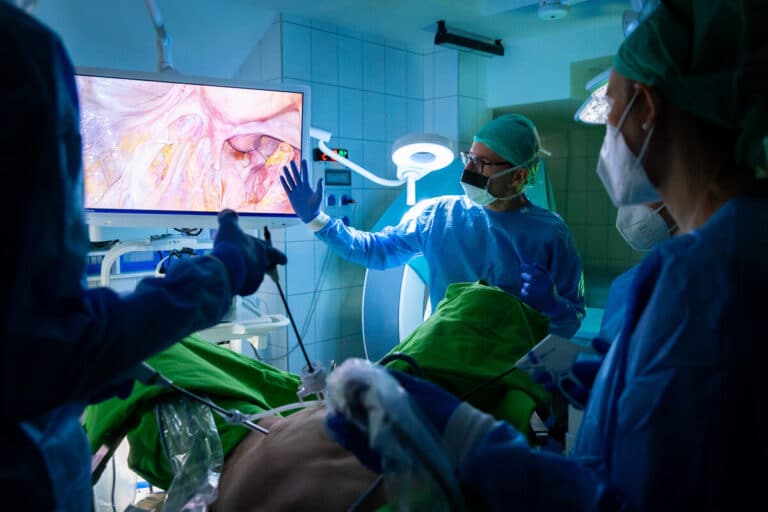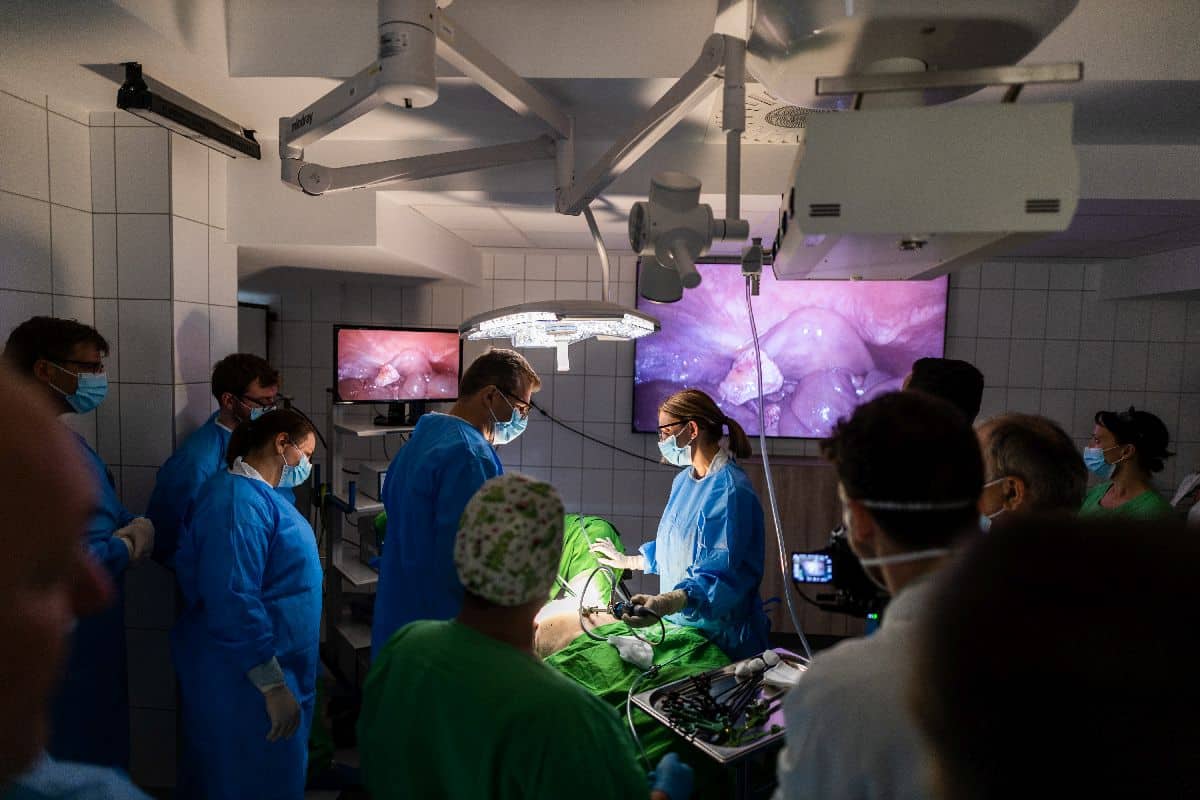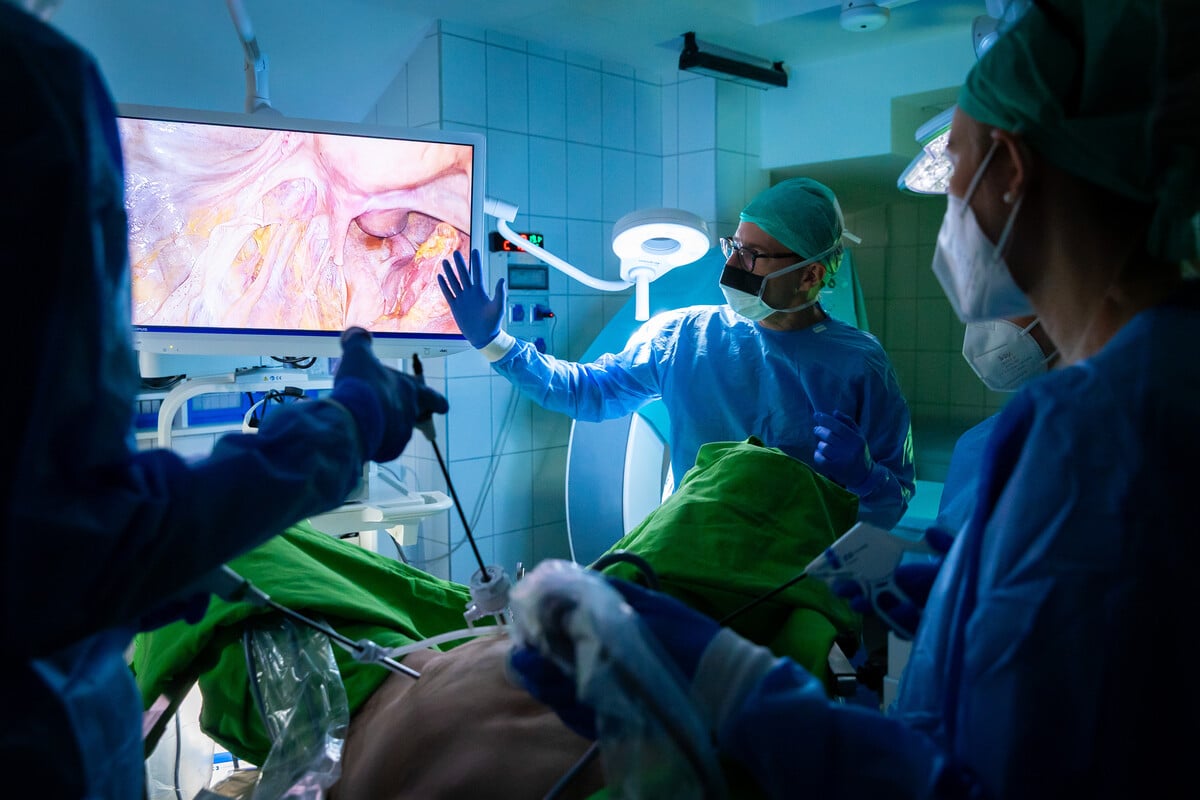At Semmelweis University, we provide an advanced anatomical and surgical environment designed for education, research, and innovation. Our state-of-the-art infrastructure supports not only high-fidelity surgical trainings but also collaborative projects with industry and clinical partners aiming to develop, test, and validate cutting-edge medical technologies.
The infrastructure is capable of supporting hybrid, minimally invasive, and open surgery, as well as endoscopic, ultrasound-guided, and robotic interventions, providing a truly versatile setting for hands-on practice and experimental procedures.
Modern Cadaver Operating Room
A total of 10 small or 5 large workstations that can accommodate entire bodies can be set up in the Cadaver Operating Room of the Department of Anatomy, Histology and Embryology at Semmelweis University, Budapest, allowing for the examination of specimens of various sizes. Each workstation provides a modern, ergonomic, and well-equipped environment for performing surgical procedures under realistic anatomical conditions.
Advanced Visualization and Recording Capabilities
All of our workstations are equipped with surgical lights, and one of them features a 4K video camera system. This system allows surgical procedures to be displayed on two large projection screens in real time. Recordings can also be made, which significantly enhances education, training, and research activities.
The projection system supports a wide range of sources – presentations, instructional videos, as well as live images from endoscopic or ultrasound devices – offering unmatched flexibility in visual learning and surgical simulation.
Comprehensive Technical Environment
Each workstation is equipped with a central suction system that provides the compressed air and vacuum necessary for the proper operation of surgical instruments and equipment. An additional advantage of the Cadaver Operating Room is its 1 mm thick lead-equivalent radiation protection. Personal protective equipment ensures the safety of the surgical team when performing diagnostic or interventional procedures involving X-ray imaging.
AICER – A Hub for Surgical Innovation
A new research and education center will open its doors at Semmelweis University in early 2026. AICER – Anatomy & Innovation Center for Education and Research (NOIKK – Nemzeti Orvosi Innovációs Képző Központ in Hungarian) will become one of the most advanced translational medical institutions in Central and Eastern Europe. The building will host state-of-the-art surgical training, biomechanical research, and medical technology validation.
AICER will integrate cadaver-based education, digital technology, and medical innovation into a single ecosystem where new surgical methods, devices, and procedures can be developed, tested, and taught under realistic, high-fidelity anatomical conditions. Spanning over 8,150 m², the center will include three cadaver operating rooms, six surgical stations, biomechanical laboratories, lecture halls, and seminar rooms.
Collaboration and Innovation Opportunities
We are open and welcoming to close collaborations with partners from the medical technology industry, research institutions, and clinical organizations. Our facilities provide an ideal environment for biomechanical research, device testing, medical technology validation, and specialized training programs supporting clinical adoption.
Working together, we can create tailor-made sessions where innovative technologies are tested, demonstrated, and integrated into clinical workflows – supported by the expertise and infrastructure of Semmelweis University.
Find out more!
Find out more!
Semmelweis University – Scientific Innovation Center in the Heart of Europe
 Semmelweis University is the oldest medical university in Hungary with over 250 years of experience in the field of biomedical sciences and in training physicians, dentists and pharmacists. As the largest health care service provider in Hungary, the University’s hospitals and clinics are places of practical education, but they also operate according to the highest level of progressivity. Beyond teaching and learning, the University’s impact extends to research, with discovery and innovation at its heart, responding to the world’s greatest challenges in the field of medicine and health sciences.
Semmelweis University is the oldest medical university in Hungary with over 250 years of experience in the field of biomedical sciences and in training physicians, dentists and pharmacists. As the largest health care service provider in Hungary, the University’s hospitals and clinics are places of practical education, but they also operate according to the highest level of progressivity. Beyond teaching and learning, the University’s impact extends to research, with discovery and innovation at its heart, responding to the world’s greatest challenges in the field of medicine and health sciences.
